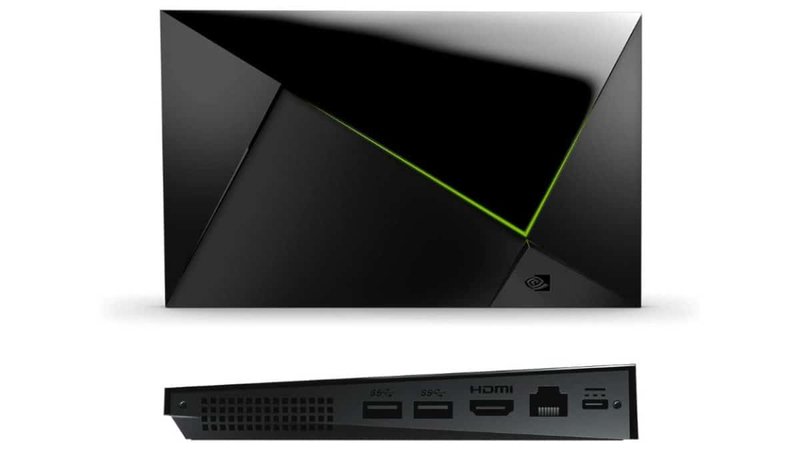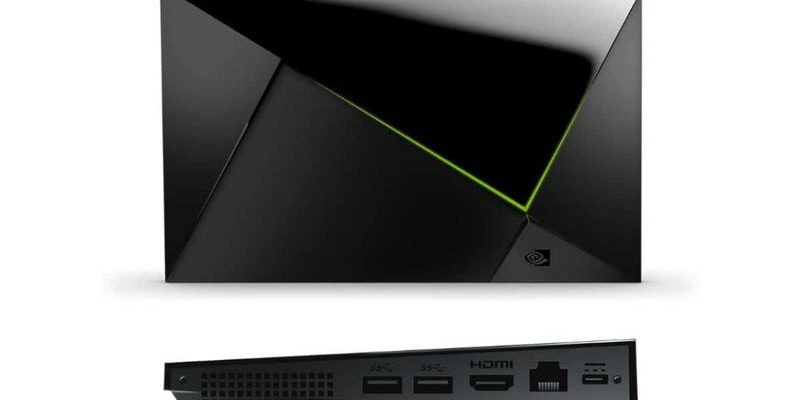
The Nvidia Shield remote is a sleek, minimalist controller meant for the Shield streaming device—a powerful little box that turns any TV into a streaming monster. But here’s the big question: can this remote double as a controller for your smart TV too? Or are you doomed to juggling two (or even three) remotes every time you want to watch Netflix or play with your Xbox? Let’s decode the compatibility mystery, one step at a time, and—who knows—maybe even help you cut down on living room clutter.
How Nvidia Shield Remotes Work
You might be picturing the remote in your palm right now: a slim, angular thing with just a few buttons and that signature voice search feature. The Nvidia Shield remote is designed to pair specifically with Nvidia Shield devices, using either Bluetooth or, on older models, infrared (IR). Now, Bluetooth is great because you don’t have to point the remote directly at the box—the signal just floats through the air, like magic. IR, on the other hand, is more old-school: it needs “line of sight,” so you end up waving the remote around like you’re conducting an orchestra, hoping your device picks up the signal.
Here’s the thing—most smart TVs still rely (at least partly) on IR for remote control, though many newer models are starting to add Bluetooth. That’s where things get tricky. The Nvidia Shield remote, especially the newer triangle-shaped ones, leans hard into Bluetooth. Some remotes include a single programmable IR blaster for basic TV functions, but it’s limited. So if your smart TV is expecting a full IR signal, the Nvidia Shield remote might not speak its language fluently.
Honestly, remote controls are like languages: if both your gadgets understand the same “words” (Bluetooth or IR signals), they can get along. If not, you’ll run into roadblocks. Knowing what signals your devices use is the first step in figuring out if this pairing will work.
Compatibility Conditions: What Has to Line Up?
Good news up front—Nvidia Shield remotes can sometimes work with smart TVs, but it’s very much a “your mileage may vary” scenario. Here’s the breakdown: for basic operations like power, volume, or mute, you might get lucky, especially if your TV supports HDMI-CEC or has a compatible IR receiver. HDMI-CEC is this neat protocol inside HDMI cables that lets connected devices talk to each other. So, with the right settings, your Nvidia Shield remote might actually turn your TV on or off or adjust the volume—even if they’re different brands.
But, let me explain: to use the full range of smart TV features, like menus or input switching, don’t get your hopes up. The Shield remote usually won’t have the right buttons, or it just won’t “understand” the TV’s unique codes. It’s kind of like expecting the TV remote to control your neighbor’s garage door. Not going to happen.
Here are the main compatibility factors to check:
- TV model and year: Newer TVs with HDMI-CEC or Bluetooth are more likely to sync, pair, or play nicely with third-party remotes.
- Type of connection: Is your TV using IR, Bluetooth, or something fancier? The Shield remote might only offer basic IR functions for power and volume.
- Settings and codes: Sometimes you need to manually “teach” the remote, entering a code or using a learning feature to get things working. It’s not always plug-and-play.
If you’re hunting around in your TV’s settings looking for a “sync” or “pair new remote” option, you’re on the right track. Just don’t be surprised if it takes some trial and error (and maybe a bit of Googling your TV brand + “HDMI-CEC”) to get it all lined up.
Pairing and Programming: Step-by-Step for Beginners
You might be wondering, “Isn’t pairing just pushing a button and hoping for the best?” Sometimes, yes! But with the Nvidia Shield remote and your smart TV, it pays to slow down and follow each step.
For HDMI-CEC-enabled TVs:
- First, make sure your TV’s HDMI-CEC feature is actually turned on. Sometimes brands rename it, like Samsung’s Anynet+ or LG’s Simplink. Check your TV’s menus—usually in the “General” or “External Device” settings.
- Next, plug your Nvidia Shield into the TV’s HDMI port and power everything up.
- The Shield should automatically try to connect with CEC. Test it: Press power on the Shield remote. Did the TV respond?
- If not, dig into the Shield’s settings (Settings > Display & Sound > Power Control) and make sure CEC options are enabled.
Using IR for basic TV control:
- Press and hold both the “Back” and “Home” buttons on your Shield remote until the LED starts blinking. This enters pairing mode.
- Look for a “Pair remote” or “Remote setup” option on your smart TV, if it supports third-party pairing.
- Sometimes you’ll need to enter a remote code. Nvidia’s support site or your TV manual might have a list.
Be warned, not every TV will play ball. If the remote doesn’t work, you might need to “reset” the remote by removing and reinserting the battery, or even try again from the top. This feels tedious, I know, but sometimes success is a careful dance of timing and button-pressing.
If you need to pair, reset, or troubleshoot, patience is your friend. Even pros have to fiddle with batteries and codes!
What Works (and What Doesn’t): Real-World Results
Let’s get honest—most people are just hoping for basic stuff: power, volume, mute. The Nvidia Shield remote can usually deliver these if your TV supports HDMI-CEC and everything is set up correctly. In my living room, for example, my Shield remote turns the TV on and off and adjusts volume, even though my TV is a totally different brand. It feels like a small technological miracle.
But, here’s where dreams can crash: you probably won’t be able to use the Nvidia Shield remote to navigate your smart TV’s menus, apps, or proprietary settings. Why? Because those functions require the TV’s own unique command set—or a universal remote with “learning” abilities. The Shield remote just isn’t designed for those advanced codes. It’s like trying to order sushi at a burger joint—they just don’t have what you’re asking for.
If you really want one-remote-to-rule-them-all, a high-end universal remote or your TV’s own clicker is usually your best bet. Or, for the techy folks, there are even “smart home” hubs that can bridge different remotes via Bluetooth, IR, or Wi-Fi. But that’s a rabbit hole all its own.
Troubleshooting: When Things Don’t Sync Up
Things rarely go perfectly on the first try. Here are a few classic pain points and how to attack them:
- Remote unresponsive? Change the batteries first. Weak batteries are remote control enemy number one—seriously, don’t overthink it.
- TV doesn’t respond to any button? Double-check that HDMI-CEC is enabled on both the TV and the Nvidia Shield. Sometimes a system update or software issue resets your settings.
- Partial functionality (e.g., power/volume works, menu doesn’t)? That’s normal, as explained above. The menu navigation probably isn’t compatible.
- Still nothing? Try a remote reset. Hold the “Back” and “Home” buttons for 15 seconds, then pair again.
Troubleshooting is part trial and error, part detective work. Don’t be afraid to poke around settings, swap batteries, or even consult the Nvidia Shield support forums—they’re surprisingly helpful.
Alternatives to Using the Nvidia Shield Remote for TV Control
Honestly, sometimes the hassle just isn’t worth it. If the Nvidia Shield remote doesn’t control your smart TV the way you want, don’t sweat it—there are plenty of alternatives.
- Universal remotes: These are the Swiss Army knives of remote control, made to speak every language (IR, Bluetooth, even Wi-Fi). They’re a bit more expensive but often worth it if you have tons of devices.
- Smartphone apps: Both Nvidia and most smart TV brands offer remote control apps for iOS and Android. It’s not quite as satisfying as a real remote, but hey, your phone’s always nearby.
- HDMI-CEC for basic use: Even if you continue using both remotes, enabling HDMI-CEC can help with power and volume synchronization—so at least you can get away with fewer button presses.
It’s a matter of preference. Some people (myself included) will always love the “feel” of a real, physical remote. Others don’t mind tapping their phone to adjust the volume or switch inputs. Find what works for your daily routine.
Why Compatibility Matters for Everyday Use
You might be asking: Why go to all this trouble? The answer is simple—convenience. Using a single remote is just easier, tidier, and less stressful. Nobody wants to dig between couch cushions for the “right” remote every time the phone rings or the pizza guy shows up. Plus, if you have guests, it’s a lot easier to hand them one device and not have to explain a complicated system.
Yet here’s the tough love part: not every remote is going to be a universal solution. The Nvidia Shield remote is beautiful, compact, and great at what it does best—controlling the Shield. But when it comes to full smart TV navigation, it just doesn’t have all the bells and whistles. That doesn’t make it useless—far from it. It does a good job for what most people want, even if there are a few compromises.
Here’s my take: use the Nvidia Shield remote for the basics, and keep your TV’s original remote handy for the fancier stuff. It’s not perfect, but it’s a great middle ground.
Final Thoughts: Should You Try Using Your Nvidia Shield Remote as a TV Remote?
So, can the Nvidia Shield remote control your smart TV? In a word: sometimes. If your TV and the Shield play nicely with HDMI-CEC or the remote’s basic IR functions, you’ll probably get the essentials like power and volume. But for deep menu navigation or input switching, you might hit a wall.
If you’re like me, you’ll tinker around anyway, hoping for a tech miracle. Maybe you’ll get lucky, maybe you’ll end up using two remotes like most of us. Either way, the Nvidia Shield remote is a solid little gadget—and who knows, it might surprise you with how much it can actually do.
At the end of the day, the real win is making your home theater set-up work for you—not the other way around. Whether that means syncing, pairing, or just having a backup remote in your coffee table drawer, it’s your call. Happy streaming!
